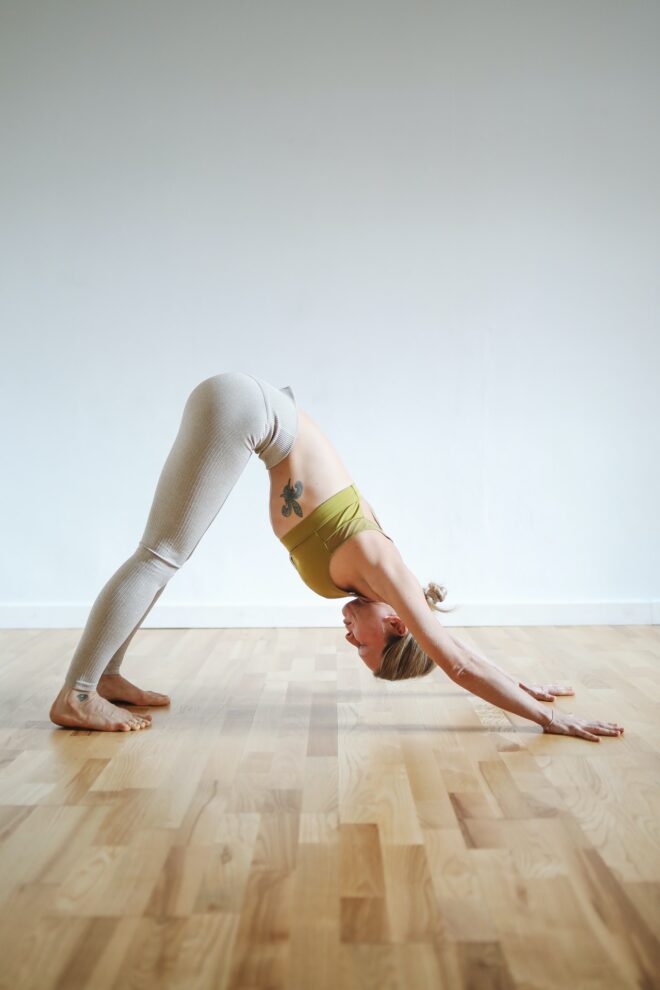![]()
Clinic News
As we are welcoming you all back to the clinic it is becoming apparent that many are continuing to work from home for the foreseeable future. While the idea of not travelling to work or being in a noisy office all day initially appealed, the reality of isolation for those of you who live alone or overcrowding with kids to educate and high demand for the Wi-Fi and suitable office space, is a major challenge for many of you.
This month we look at some ideas to help overcome these issues from a posture perspective to reduce the neck and shoulder issues we are seeing an increase of. Alex also got the opportunity to talk to Alan Clifford on BBC Radio Nottingham again last week to share some of these ideas. If you didn't get to listen in, check out the podcast: https://www.beestonchiropractic.co.uk/working-on-your-laptop-during-lockdown-look-after-your-neck-and-back/. Check out the articles for advice on keeping that spine supple, preventing calf injuries and ways to keep your energy levels high because we are all working so very hard at the moment.
We very much welcome the return of Anne Etherton the acupuncturist next week. Anne will be in contact with her patients to share her policies and procedures with them before they attend the clinic, as we are doing things a little different, those who have been in for your chiropractic care will know.
Unfortunately, Jenny and Ruth still do not have any indication as to when they can return to the clinic or how. They are waiting patiently in the background with all their risk assessments complete, they just want the green light now.
As the clinic gets busier we are waiting to progress to another level of easing which will increase the availability of the chiropractors by a further third. Appointments will become 20 minutes apart rather than 30. Reception waiting will be allowed with social distancing and all other measures continuing for the foreseeable future e.g. masks, gloves, gowns etc. However, we feel we need to be cautious and wait a few more weeks to ensure that there is not another spike and we have to regress back to fewer appointments again, so please bear with us. We are sorry, it can be tricky to get in but do utilise the waiting list as often we are able to clear this within a few days. Missed appointments are still occurring and are very frustrating for the chiropractors so please after your reminders let us know if you cannot make your appointment.

Take Care of Your Spine
Spinal and muscle health is a crucial part of overall health, and if not trained or kept mobile, can deteriorate quickly and lead to injuries. Daily walks, stretching and aerobic exercises are just some of the activities that keep the spine and body healthy and aligned.
Strengthening exercises should be performed regularly, starting with slow stretches followed by targeted muscle exercises. This regular practice will help avoid back pain or injuries.
Back strengthening exercises can be divided into three groups:
- Power: repetitive muscle contractions to a state of fatigue
- Stretching: slow static stretching of the muscles
- Aerobic: exercises that involve large muscle groups
Start by training your posture and the entire body will benefits from the simple readjustment. Crucial to those who sit or stand all day, readjusting the posture removes pressure from the pelvis and hip muscles, which become strained when maintaining one single position. Stretching becomes essential in regaining mobility and releasing muscle tension, elongating various muscles groups and strengthening the spine.
All exercises should be performed slowly, without discomfort, to avoid injury. When performing strengthening exercises and stretching, do not forget to exhale at the moment of tension and inhale while relaxing.
You do not need to wait for discomfort and pain to manifest in your spine, it’s beneficial to regularly perform exercises to strengthen the spine and prevent any issues:
- Constantly monitor your posture
- Do sports, remember that the body is not adapted for sitting, but created for movement
- Choose the right chair and sit with a straight back
- Avoid carrying heavy objects
Remember that a healthy back is the key to healthy body.

Calf injuries - cause, symptom, prevention, tips
With long distance running marathons and triathlons becoming increasingly popular as well as a increasing array of high intensity exercise classes like Zumba, Barry’s Bootcamp, HulaFIt, calf muscle injures are seen more commonly.

How does it happen?
Calf strain occurs when the muscle at the back of the lower leg becomes damaged or inflamed due to excessive strain or force being placed on the calf muscle. These injuries often arise from sports that involve repeated jumping or change of direction as well as explosive sprinting or long distance running.
Calf muscle tears get more common as we get older due to the loss of elasticity in our muscles and tendons. Soft tissue injuries get more common if you over train a certain structure and eventually it breaks. Often injuries can start with micro-tears in the calf muscle and achilles tendon and this in turn can result in a to a complete tear.

What are the symptoms?
Patients are likely to feel aching and stiffness which becomes more apparent first thing in the morning and often the calf will feel weak, making the patient unable to resume activity and sometimes bear weight resulting in a limp.
How can I prevent it?
If you’ve been inactive for an extended period of time, to prevent injuries you need to start off very slowly and gently. Start with non-ballistic exercises such as calf raises and progress the program to eventually include ballistic exercises, maybe 3 months later.

Top Tip
Warming up and stretching after exercise is always recommended but be careful not to overstretch or put excess force on calf muscles. Stretch until there’s light tension in the muscles, taking a deep breath and slowly exhaling. Hold that position for 15-to-30 seconds, relax and repeat up to four times. Stay still and don’t bounce during stretching. Don’t push yourself to the point of pain; ease the stretch until it is comfortable.

Better Energy
Many people feel tired or run-down at some point during the day. A lack of energy could affect your daily activities and make you less productive. The type and quantity of food you eat play an essential role in determining your energy levels during the day. A few simple changes in your diet may be all you need to get back to your brighter self. Give yourself an energy overhaul with the following tips.
Eat every three hours
Eat breakfast, lunch and dinner, plus a healthy snack mid-morning and mid-afternoon, with no longer than three hours between. This will stop those cravings for sweet foods. Keeping snacks such as vegetable sticks and hummus or peanut butter and oatcakes to hand will help you to resist sugary hits and keep your energy stable.
Drink up
It is important to regularly top up your liquid levels, to help you to feel more alert and focused, and to get rid of any brain fog. Our bodies are mostly made up of water, so replenishing during the day helps to keep us feeling our best. Aim to drink two litres of water throughout the day.
Power up with protein
Instead of carbohydrate-loaded cereals, switch to a lean protein source for breakfast. Protein takes longer to digest, so it will keep you fuller for longer, and also helps to maintain healthy blood sugar levels. Try eggs, salmon and avocado to start the day. A protein-focused lunch will also help to curb the notorious afternoon dip, and a protein shake will keep your energy steady.
Be clever with sugar
If you are craving sweets all the time, swap to something with less sugar. Try eating dark chocolate, which you might be less prone to eating too much of. That’s because milk chocolate is mostly sugar and milk solids, but dark chocolate is richer in cocoa and satisfying after a square or two. Berries are also a good choice as they have sugar, but the fibre will help “buffer” the sugar high to prevent energy levels from rising and falling.
Choose wholegrain
Start buying wholegrain alternatives for your bread, pasta and rice. Whole grains release energy slowly as their carbohydrates break down slowly over several hours so that they do not suddenly flood the bloodstream with sugar. Also, this gradual release helps you feel fuller for a longer time, suppresses your appetite and stops you craving sweet foods.
Aim for more vitamins
Eating a wide variety of fruits and vegetables will help you add important nutrients and good bacteria to your digestive tract. It is important to eat such foods as broccoli and cauliflower as they are full of micronutrients, antioxidants and fibre. If you find that your eyelids are hanging in the middle of the morning, choose fruit as a snack. Peeling and eating the fruit with its invigorating aroma will give you a pickup.
We treat all conditions that affect any muscle or joint in your body, from your head to your little toe! One of the most common complaints that we treat is back pain and Chiropractic is recommended by the government authority, the National Institute for Clinical Excellence (NICE) for acute and chronic back pain. Some of the other conditions that we treat are neck and headache, shoulder pain, leg and hip pain, knee and foot pain, sciatica and arthritis. Our registered Chiropractors all have at least five years of training. Treatment costs can be covered through most health insurers. If you are in any doubt, we are always very happy to talk with you on the phone to see if your condition will respond well to Chiropractic treatment. Call the clinic now to arrange an appointment time that works for you. 0115 9225085 If you would like to opt-out of receiving these newsletters please follow the unsubscribe link below, email alex@beestonchiropractic.co.uk or let us know at your next appointment.






